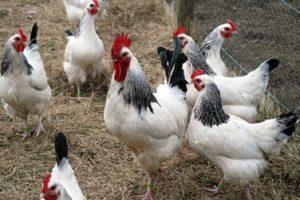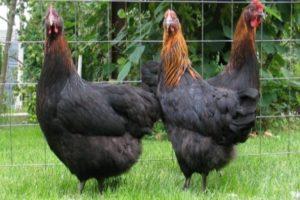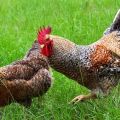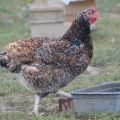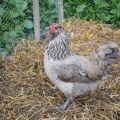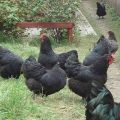Description and characteristics of the Legbar chicken breed, breeding and care rules
For successful breeding of poultry, you need to choose the right pair and species. The Legbar breed of chickens is a successful hybrid species that farmers often breed for industrial purposes. In order for these birds with an interesting appearance to please with high productivity, you need to know the peculiarities of keeping and breeding.
History of the origin of the Legbar chickens
In the middle of the last century, two breeders from the Cambridge Genetic Institute were trying to develop a breed of industrial-type chickens that would have autosex properties (one could determine the sex of a day-old chicken). The first results were satisfactory, but far from ideal.
As a result of further crosses, a hybrid of the Leghorn rooster and Plymouth chicken breed was bred. And so, after a couple of generations, they managed to breed a new breed that is highly productive..
Description and defining characteristics of the breed
Chickens Legbar are of the meat-bearing type. The weight of an adult rooster reaches 3.5 kilograms, and that of a chicken - up to 3 kilograms. Breeders appreciate this breed for its excellent characteristics and high egg production rates.
Appearance
The Legbar breed is crested hens of cream and chestnut shades, roosters are distinguished by light colors with cream and gray tones. Feathered coloration is inherent in birds, there is a medium-sized crest, wedge-shaped bodies. The tibiae are bright yellow, medium-sized white catkins and a red leaf-shaped comb with 6 teeth in males, and in females with 8 teeth. Chickens with dense, lush plumage and well-developed wings.
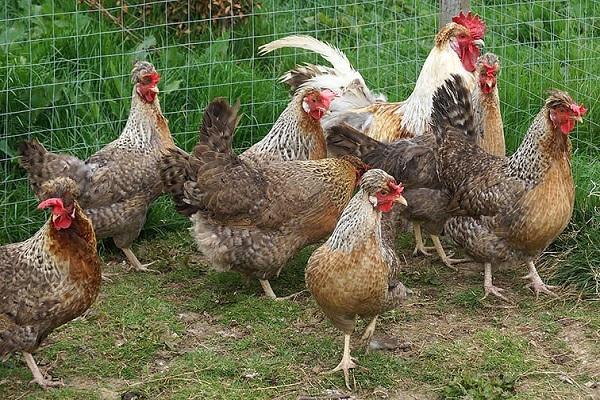
Character
Chickens Legbar are quite mobile birds, especially if they are released into open areas. Their character is calm, peaceful and non-conflict. The main feature is that chickens of this breed get along well with other breeds of birds. However, roosters tend to behave aggressively, and they also protect chickens from possible threats. It is recommended to install green lamps to calm the males.
Productivity
Productivity indicators are one of the advantages of the Legbar breed. One hen can produce up to 250-270 eggs per year, they begin to lay eggs at 4 months of age. Chicken meat weighs up to three kilograms, and the weight of one egg reaches 70 grams.But, despite the high productivity, birds lack maternal instinct, which is why they cannot hatch eggs on their own. It is possible that the purchase of special incubators will be required.
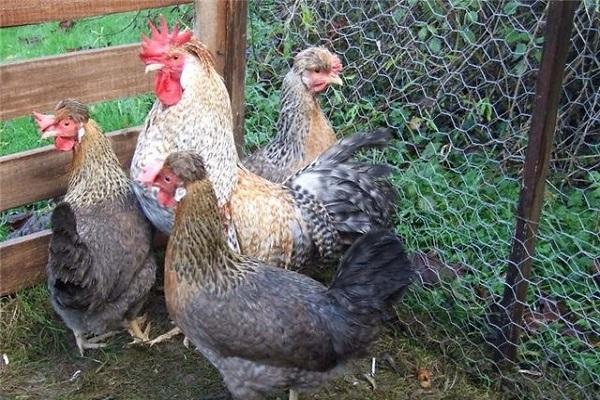
Pros and cons of the breed
A breeder who plans to purchase this breed of chickens should familiarize himself with all the nuances of their content. A fairly large number of positive aspects is characteristic of Legbar:
- The unusual color of eggs is a delicate blue tint, sometimes greenish.
- High level of egg production.
- Birds have a calm nature.
- High immune protection and good health of chickens.
- Birds are autosexual - you can easily distinguish a rooster from a chicken, even if the chicken is only a day old.
However, it is extremely important to note some of the disadvantages of this breed: increased sensitivity to temperature (at low values, egg-laying is absent or reduced), and chickens also lack maternal instinct. Replacement of chickens is required every two years, as productivity drops sharply.
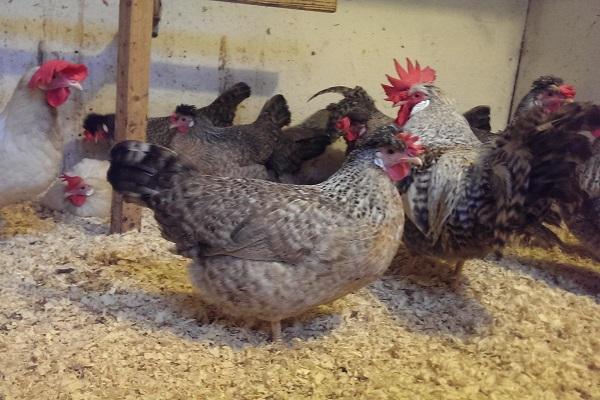
Tips for maintenance and care
Keeping Legbar birds is not difficult, but the conditions of keeping and feeding will necessarily affect productivity. Subject to the basic rules, chickens will provide large eggs of an unusual shade.
Coop, walking area, feeders and drinkers
Birds are not demanding for the chicken coop itself: it is more important for them to have feeders and an acceptable temperature regime. Since the Legbar breed is extremely mobile chickens, they will need to be given maximum space. The house must be equipped with perches, nests for layers and drinking bowls with fresh water.
Chickens consume twice as much water as feed. Therefore, it is important to monitor the condition of the drinkers and prevent droppings and debris from entering them. It is recommended to prepare a specially equipped aviary for walking. A quality fencing will protect the livestock from various threats and give them free space.
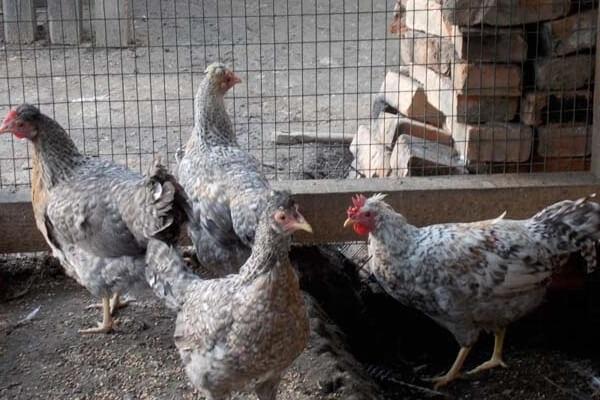
Temperature, lighting, humidity
Since the Legbar breed belongs to heat-loving birds, it is important to monitor the temperature indicators in the chicken coop - the mark should always be above zero. It is also required to exclude drafts, but an inflow of fresh air is necessary. The issue of illumination is acute in winter, when it will be necessary to artificially extend the day.
As a rule, additional lighting is provided in the hen house - so that the hens can lay, the daylight hours should last at least 12 hours. Excessive humidity should be avoided - the flooring should be changed regularly.
Winter care, molting
To receive eggs in the cold season, you will need to seriously insulate the house, as well as the installation of an additional heater. It is extremely important that the room temperature remains above zero. The previous volume of egg production is possible with positive indicators of 15-17 degrees. The floor should be covered with sawdust, hay or peat.
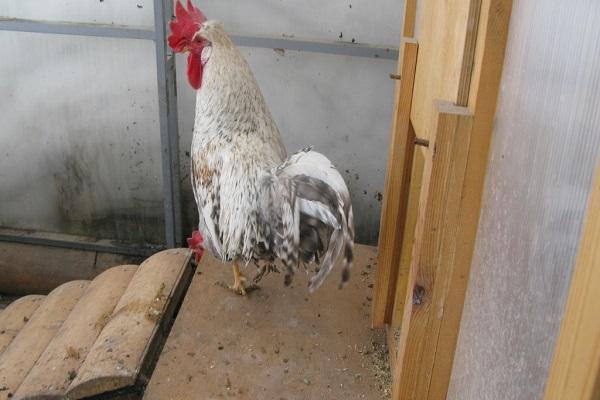
In winter, chickens often develop vitamin deficiency, so it is recommended to add calcium supplements to food. Molting is required to improve egg production, but sometimes it can be delayed. In this case, artificial stimulation of this process will be required.
What do chickens eat?
Chickens of the Legbar breed need food of animal origin, which they can get on their own (for example, worms). But also, in addition, they need a balanced diet. The most preferable option is compound feed. Birds of this breed do not bring big problems for breeders, however, it is extremely important to follow the basic rules when feeding young and adult birds.
Chicks
Chicks' food must contain calcium, which ensures good bone growth. To do this, you can place a bowl of limestone near the main feeder.The water in the drinker must be changed at least twice a day. Day-old chickens are fed with cottage cheese and finely chopped herbs, but young animals are also allowed to be given yogurt and boiled porridge in water or broth. And from only one month old, chicks are allowed to give whole grain.
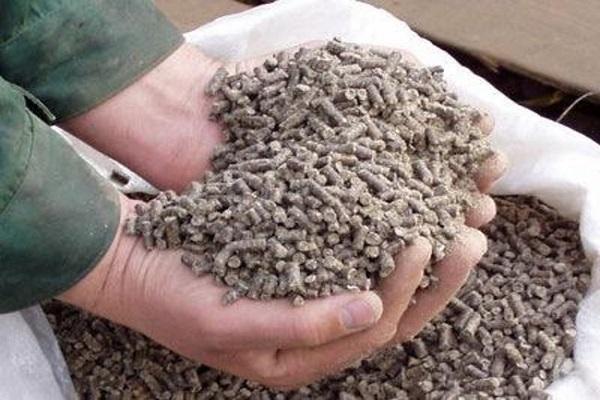
Adults
It is recommended to give hens premixes that increase egg production. However, it is often not worth adding them - chickens may develop vitamin deficiency. In order for adults to be able to get a full supply of all the necessary trace elements and vitamins, they will need food with the following components: whole or sprouted grain, prodel, fish or bone meal, vegetables and complex supplements. They can also be fed with fresh grass and vegetables.
It is believed that adult chickens require special food to give the shell an unusual bluish tint. However, this is a false statement - the color of eggs is genetically laid down and does not change due to additives.
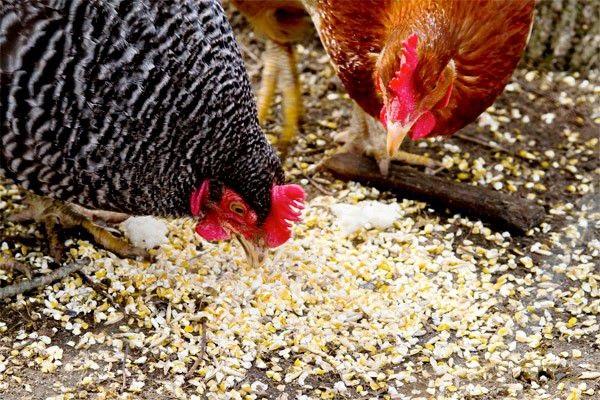
Breeding features
As noted earlier, Legbar chickens have lost their maternal instinct and are unable to hatch eggs. If the breeder needs to breed this breed, two options are available for him: use an incubator or put eggs under other birds that can incubate them. If the eggs were originally taken from hens with quality indicators, then the survival rate of young animals can reach 100%. But, as a rule, this figure is within 90%.
Young growth grows extremely quickly - by one month, the weight is about 500 grams. But for this you need to follow the main rules for breeding and keeping. As soon as the chicks hatch, don't rush to pick them up from the incubator. Leave them there for a couple of hours. During this time, brooders or deck boxes may be prepared for them. After eight hours, they can be fed with cottage cheese.
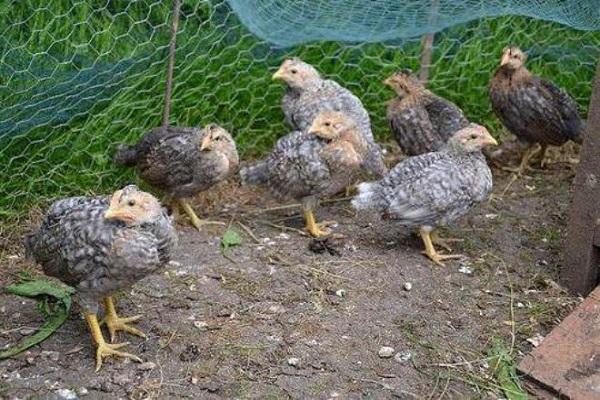
The litter should be changed at least once a day. It is also extremely important to provide young animals with round-the-clock lighting, especially in the first two days.
Common diseases and possible problems
Despite their high immune defenses and resistance to disease, Legbar chickens sometimes suffer from various types of damage. In particular, young animals are susceptible to various infectious diseases. It is also worth noting that Legbar birds have a genetic predisposition to congenital deformities of the toes. A common cause of this defect is an improper diet. Chickens are more likely to develop limb deformities if their diet lacks sufficient vitamins and minerals.
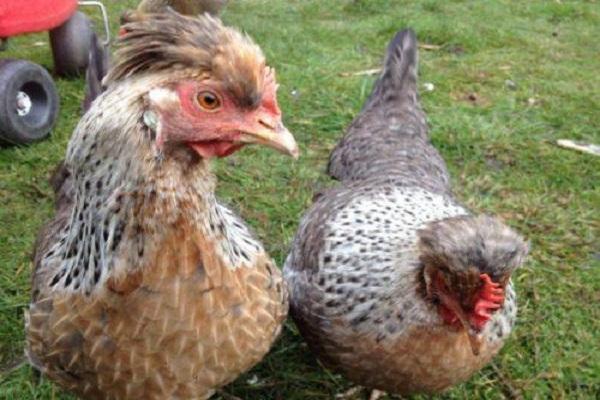
For diarrhea in chickens, a weak solution of potassium permanganate is used, which is used to solder the chicks - this helps to restore the stomach. However, this method is only suitable for those cases in which medications are not needed.
In addition, chickens are susceptible to the following diseases: salmonellosis, pasteurellosis and Newcastle disease. Disorders of a non-infectious nature are also not excluded: atony, cloacitis, gastroenteritis. To avoid the appearance of such problems, it is required to observe preventive measures: keep the chicken coop clean, regularly carry out disinfection, give the birds vitamin complexes, monitor the condition of the water.
